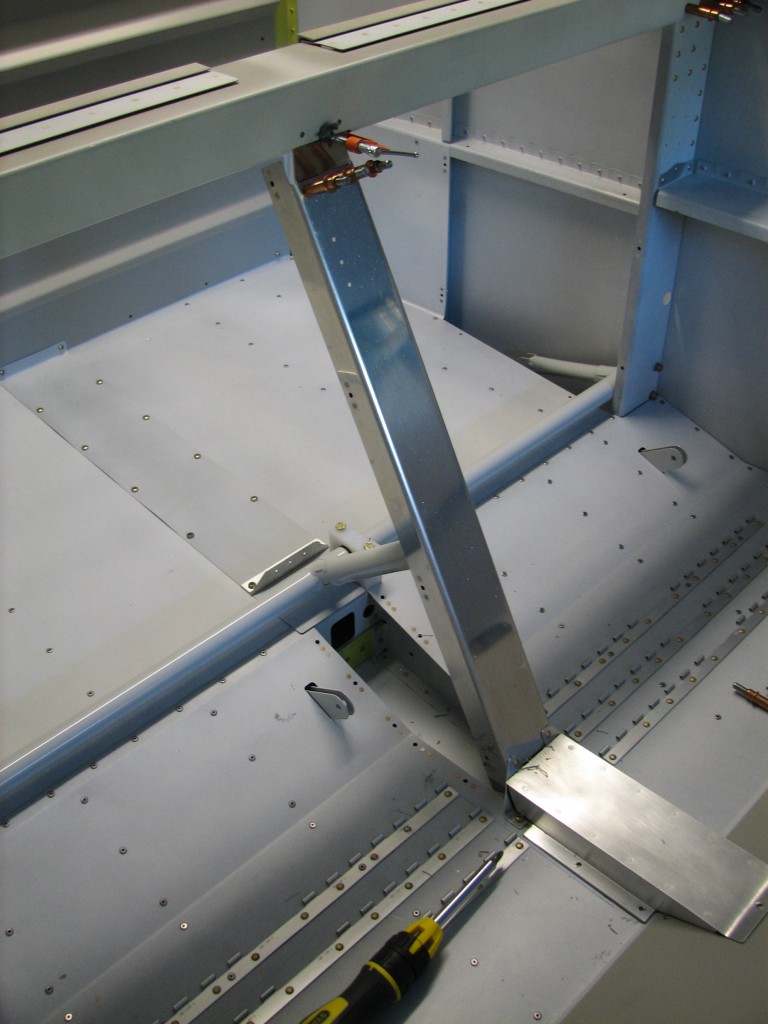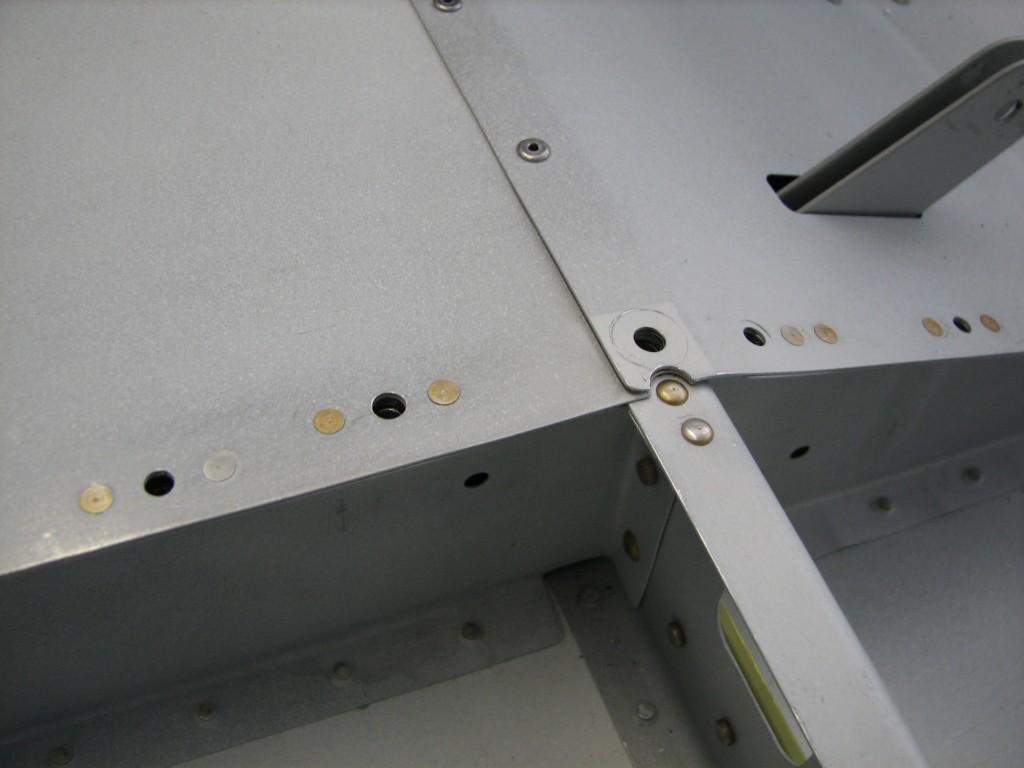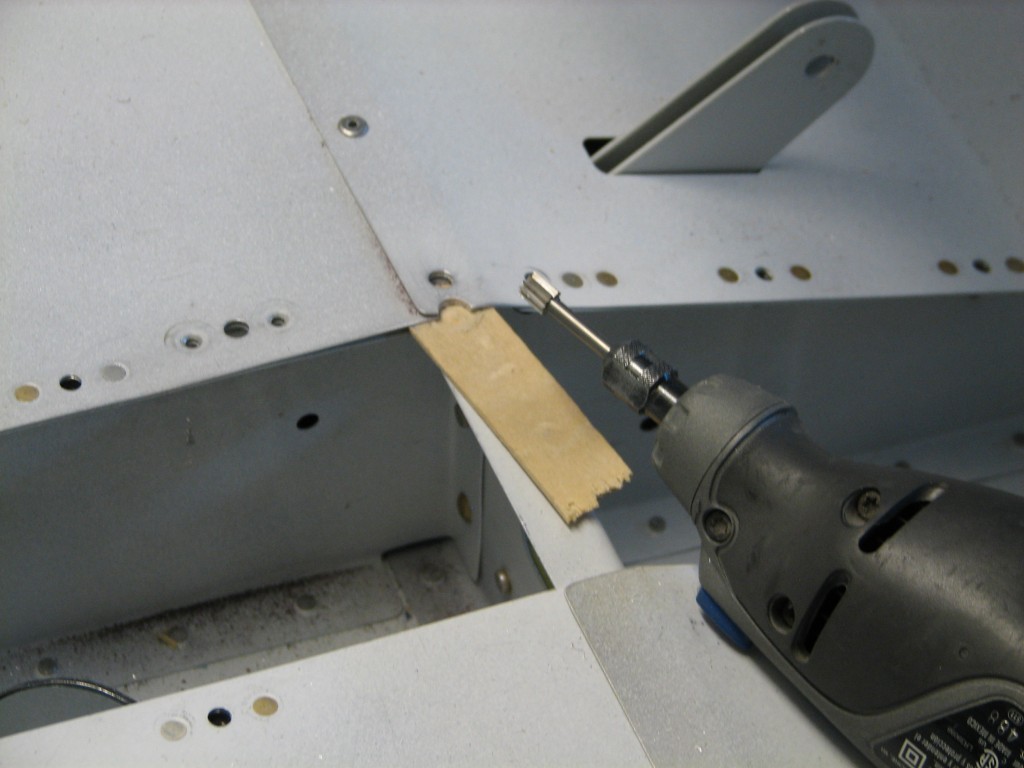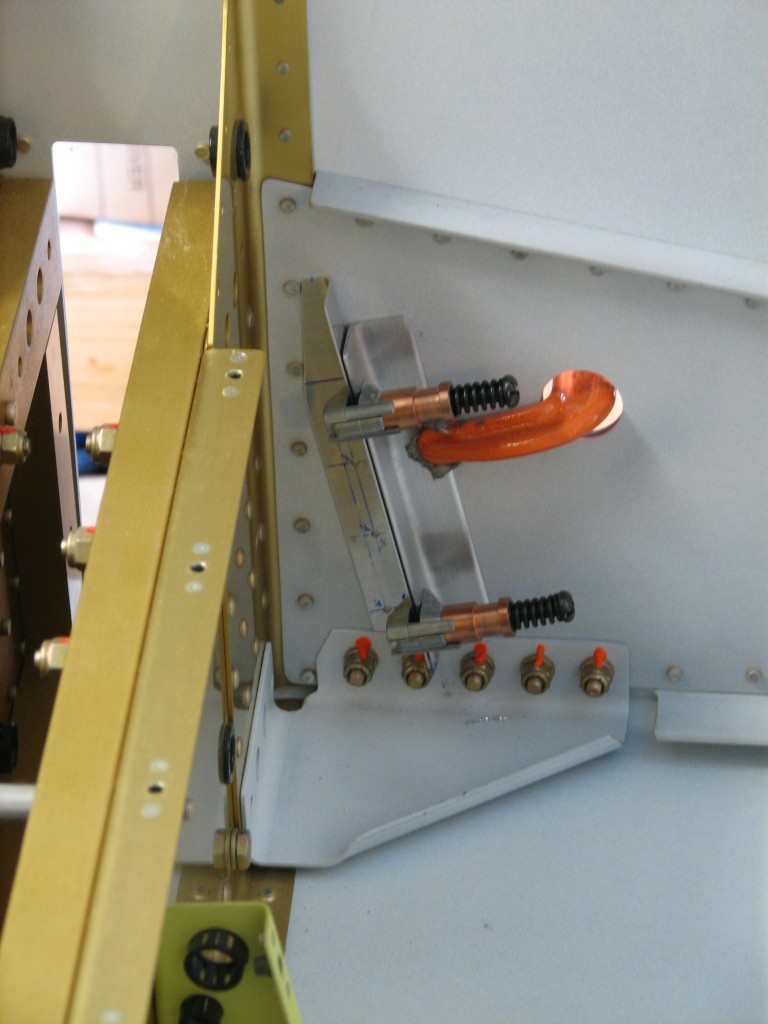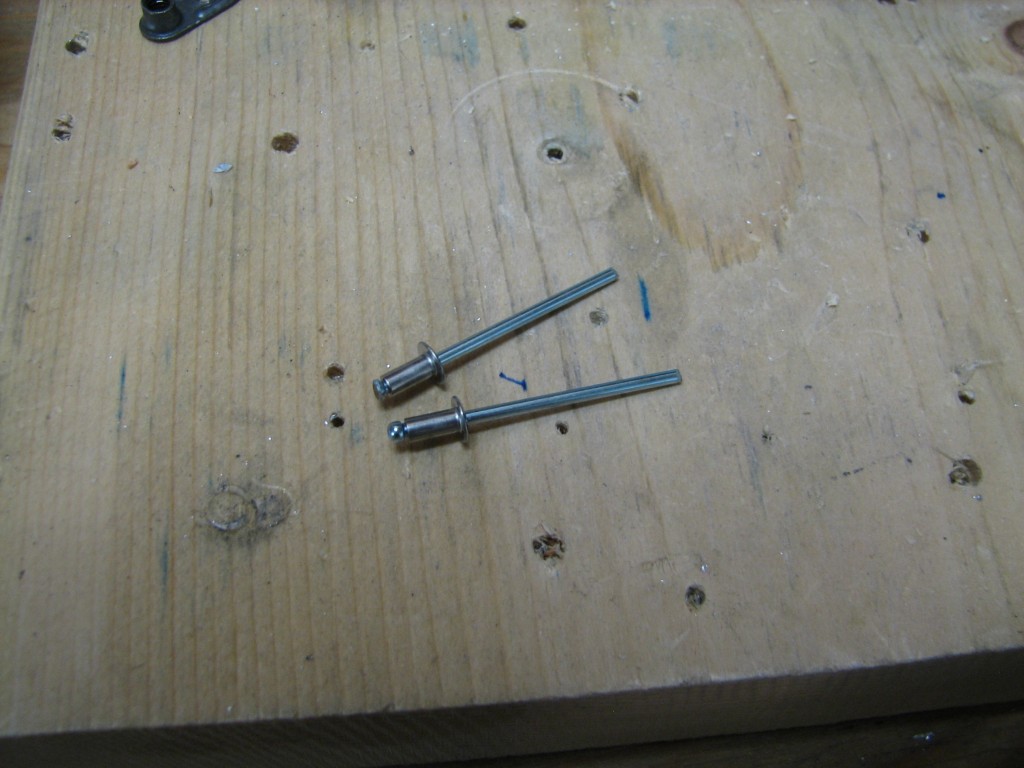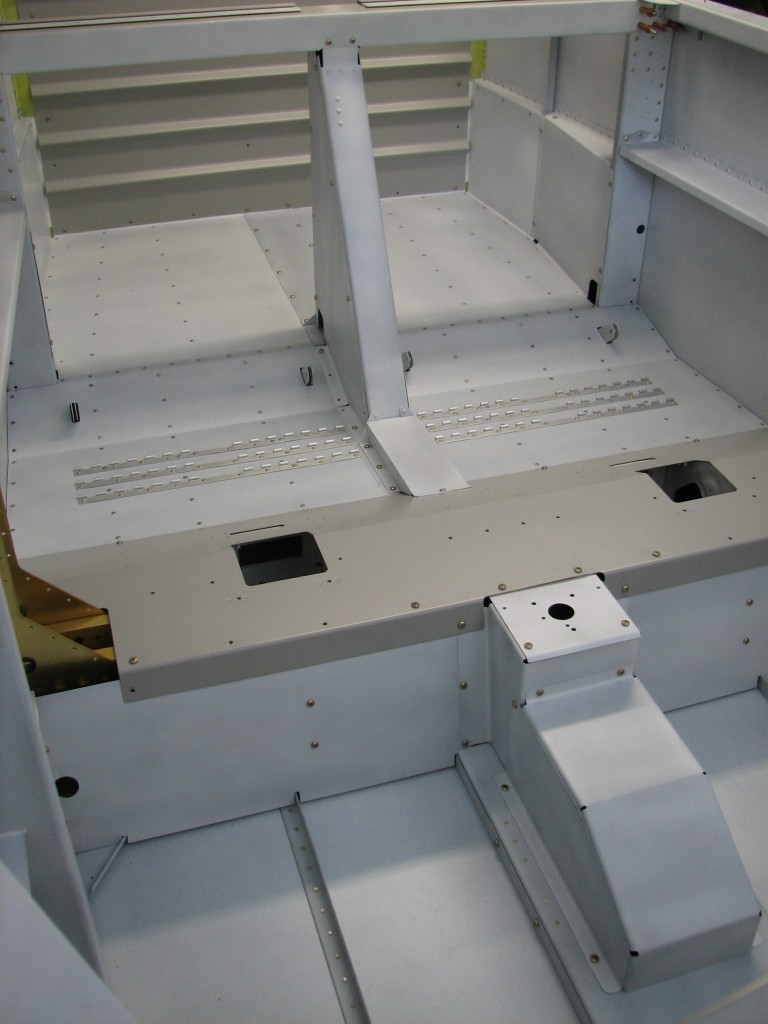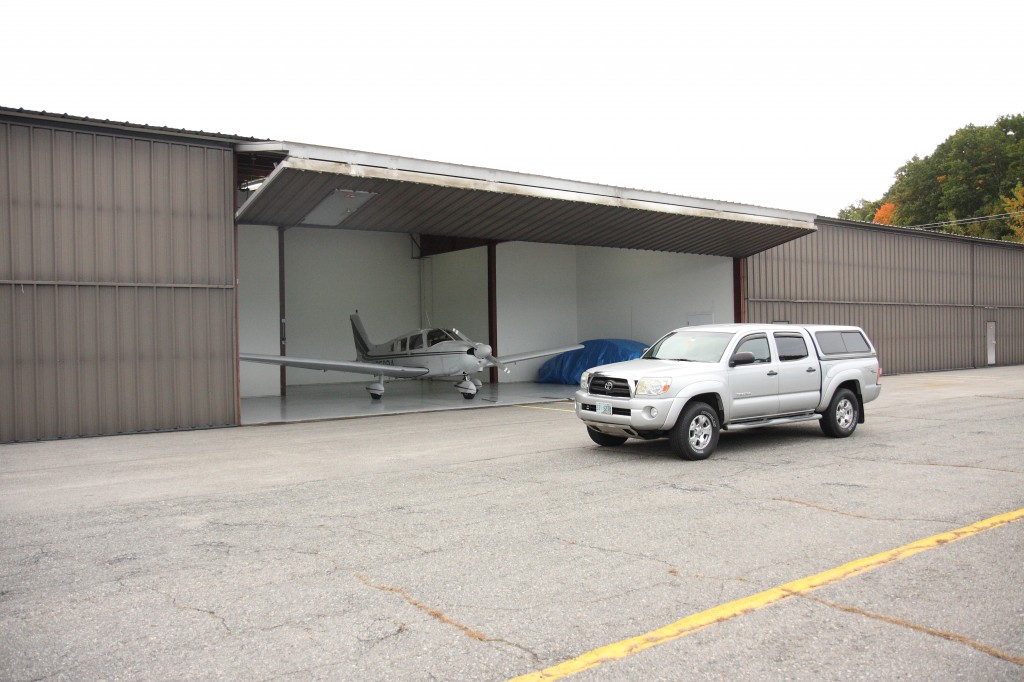Next up after the seats is fabricating the cockpit rollbar structure. This stout piece of structure protects the occupants (i.e. Ellen and me) in the extremely unlikely event that we find ourselves upside down on the ground.
The rollbar is one of the few remaining “old school” parts from the RV-6 that Vans carried forward to the -7. The rivet holes are not prepunched and the builder is left to lay out those holes and jig the parts appropriatelty when fabricating and drilling the rollbar. Fabricating the angles is no big deal…just a little layout work and a few minutes on the bandsaw.
Once the rollbar is fabricated, these chunks of angle hold it in place next to the F-705 bulkhead.
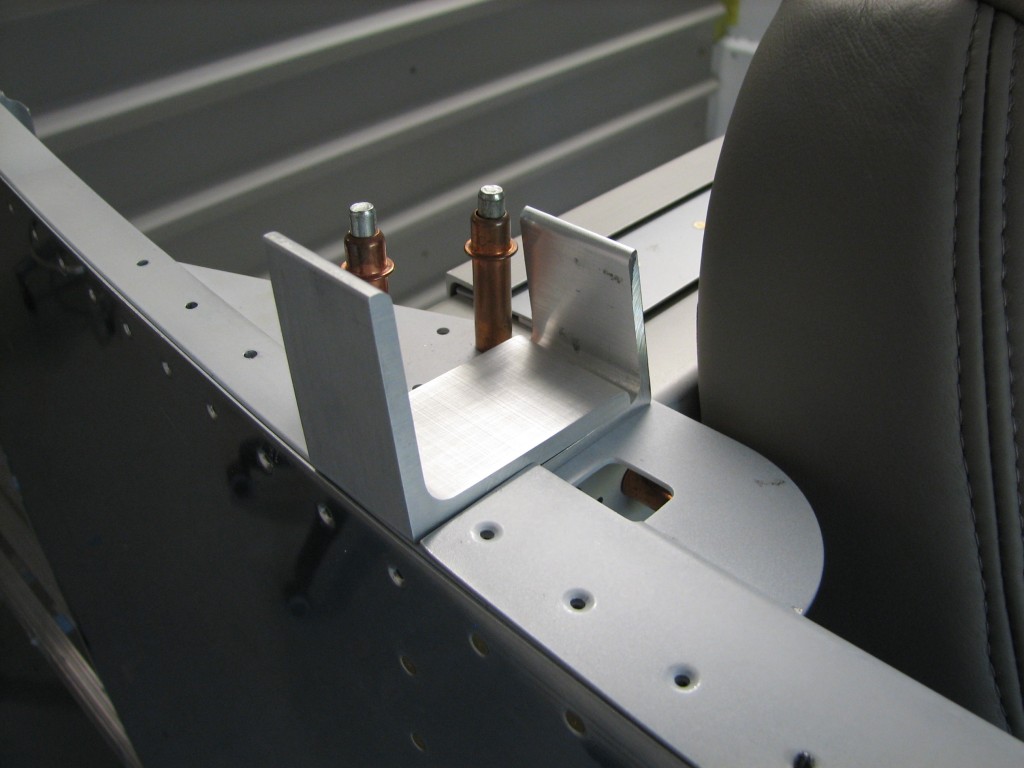 It struck me that there aren’t too many pictures of me in this blog. In terms of site beautification, that’s a good thing. But one of the main reasons for this site is to prove to the Friendly Aviation Administration that I really did all the construction work on the RV, so here’s a selfie to get my face in this post.
It struck me that there aren’t too many pictures of me in this blog. In terms of site beautification, that’s a good thing. But one of the main reasons for this site is to prove to the Friendly Aviation Administration that I really did all the construction work on the RV, so here’s a selfie to get my face in this post.
Nice pic, huh?
The main rollbar channels come in left/right pairs, and they’re preformed out of very stout 0.063″ aluminum. 2″ diameter holes are cut in each side of the rear channel to provide access for attachment hardware.
I used the flycutter to make these holes. Flycutters get the job done, but require some finesse to get the hole diameters just right. Plus, the cutter itself can be pretty dangerous as you can tell from the blurry spinning mass attached to the drill press – you don’t want to get a finger whacked by all that moving stuff.
I laid out the maximum width and height of the rollbar on a piece of thick MDF and trimmed the inboard ends of each piece to make the width come out right, then trimmed the bottom ends of each piece to establish the correct height. In the pic you’ll see the two rear halves clamped to the MDF board and held together by an 0.063″ doubler that I fabricated and match-drilled in place.
Truth be told, these pics are the from my second attempt at fabricating the rear rollbar half. For a variety of reasons that don’t bear repeating, my first try wasn’t so successful. If you’re an RV builder and are reading this before you fabricate your rollbar, just remember to carefully lay out rivet spacing and edge distance. Also, don’t worry about adjusting the flanges on the rollbar halves…that will just make it harder to get the parts to lay flat.

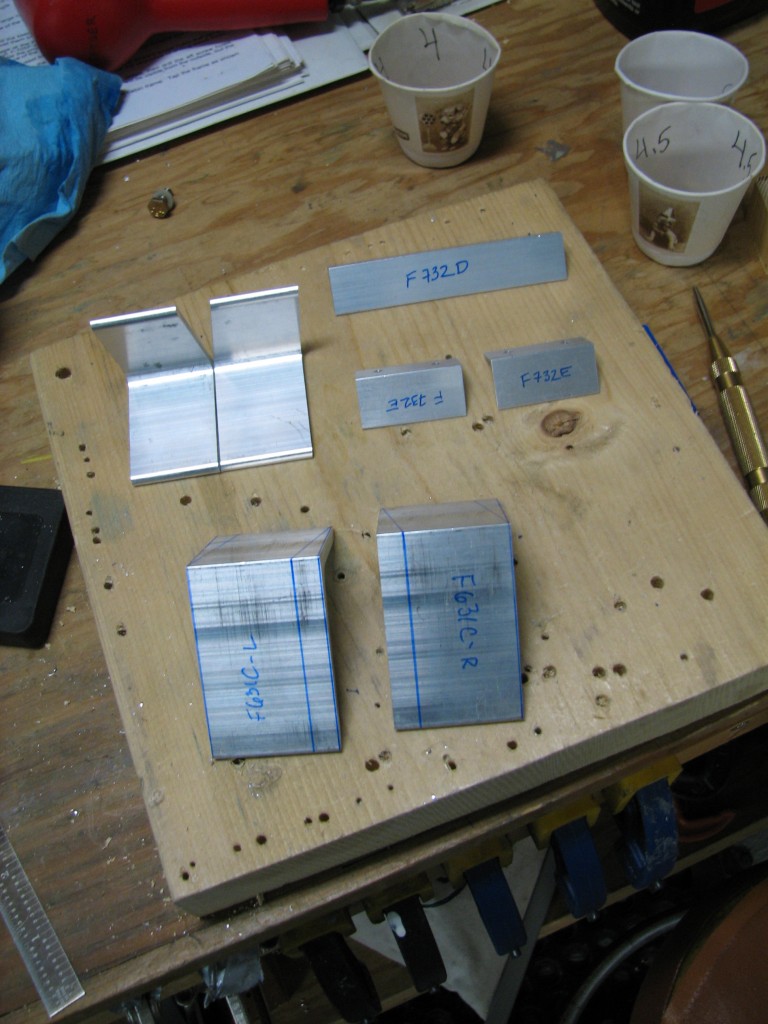
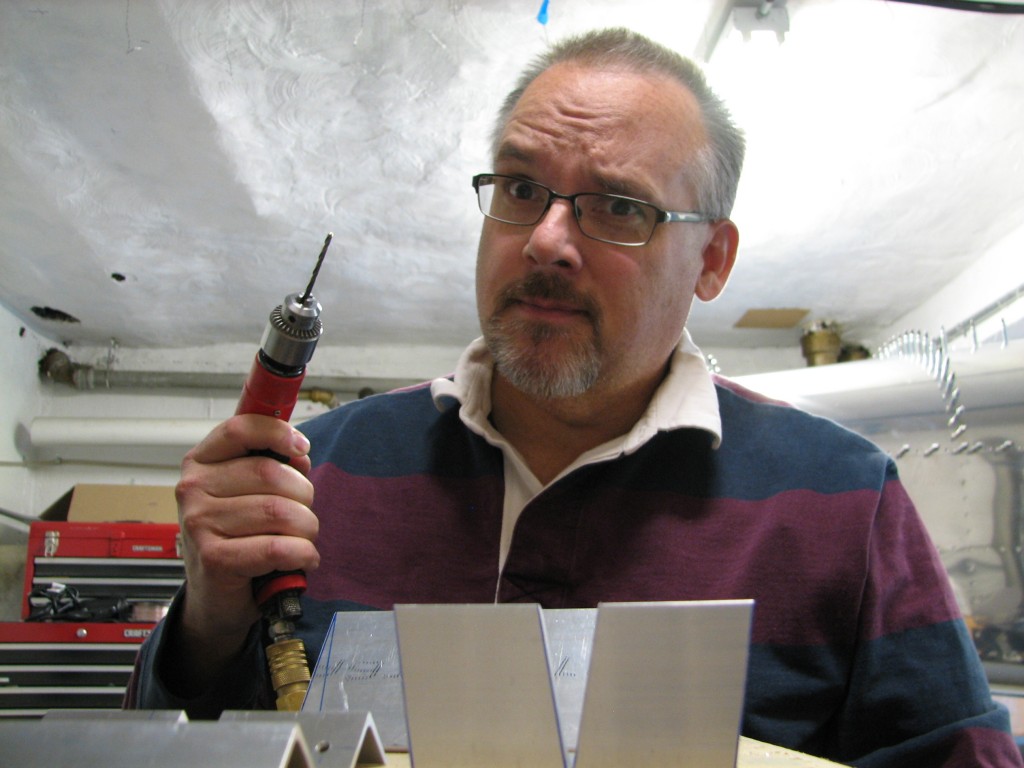
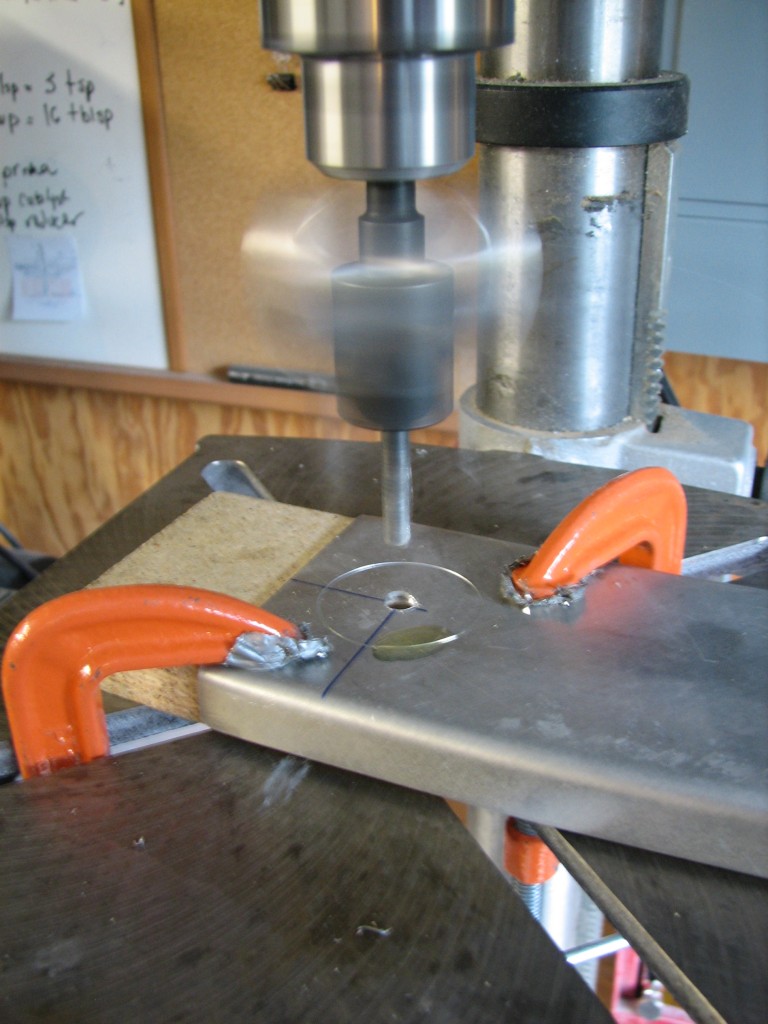

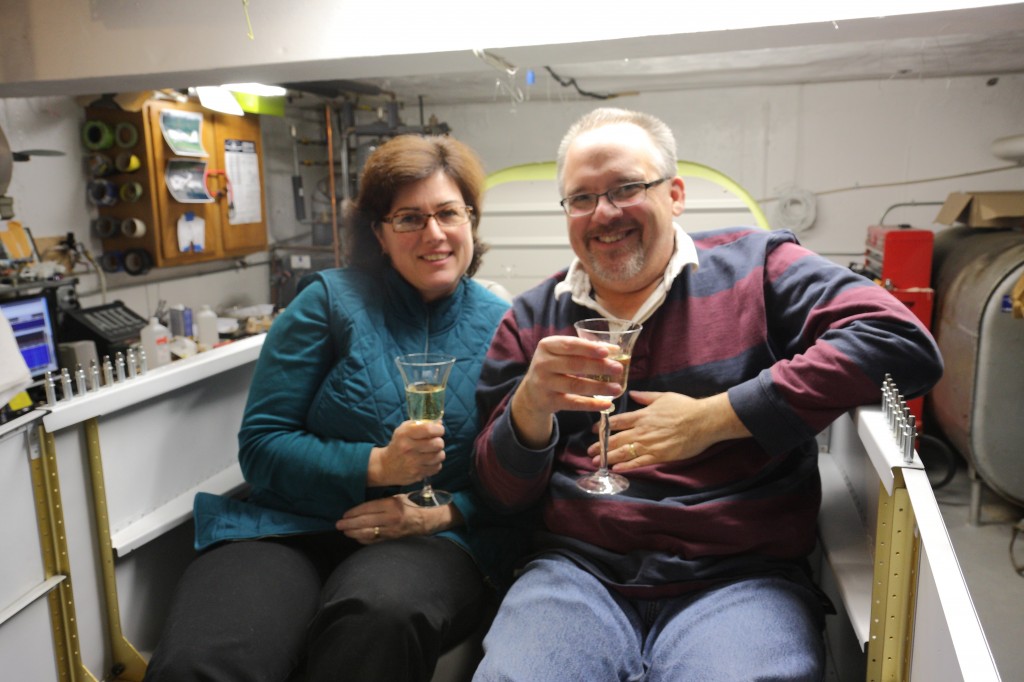
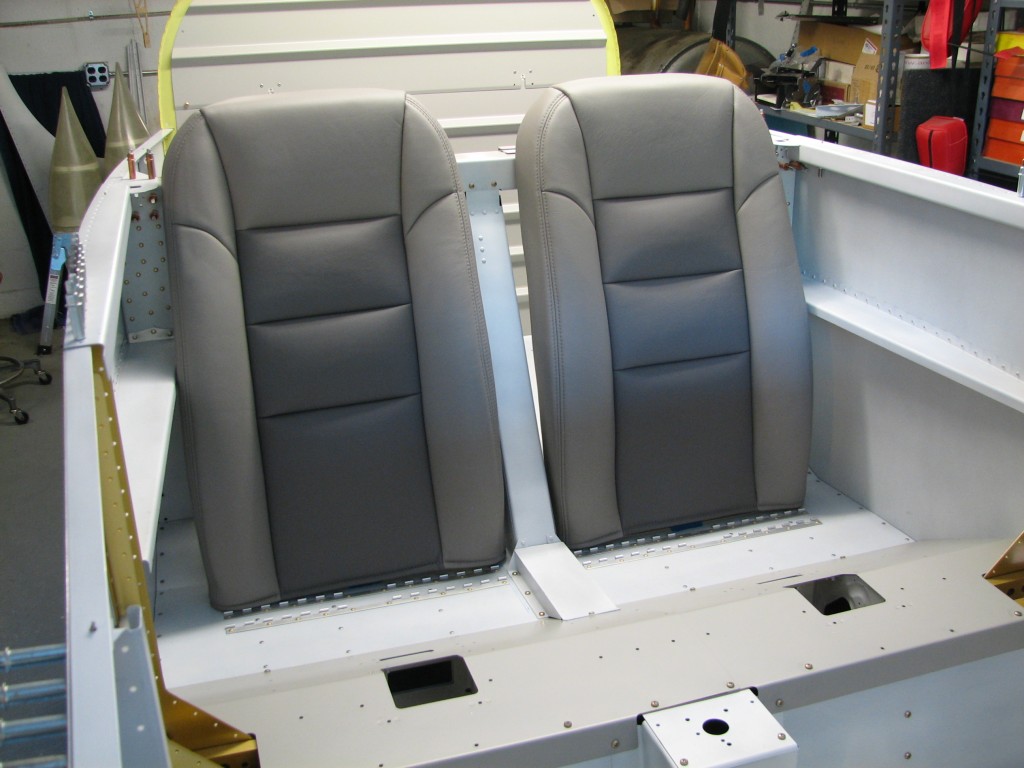

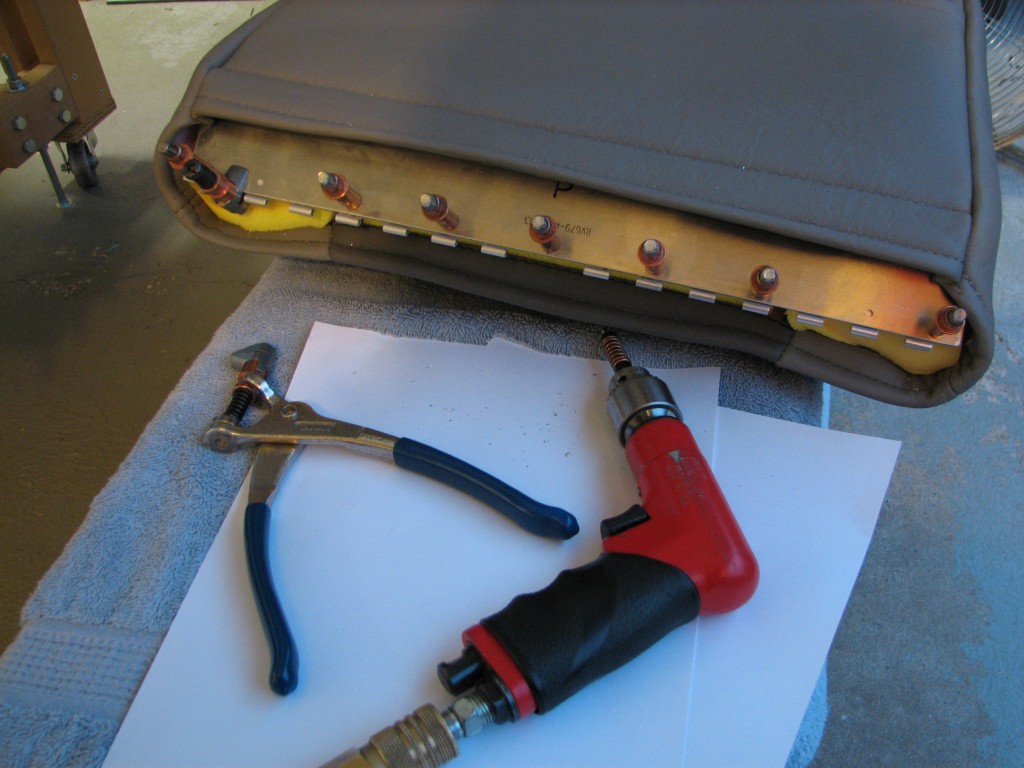
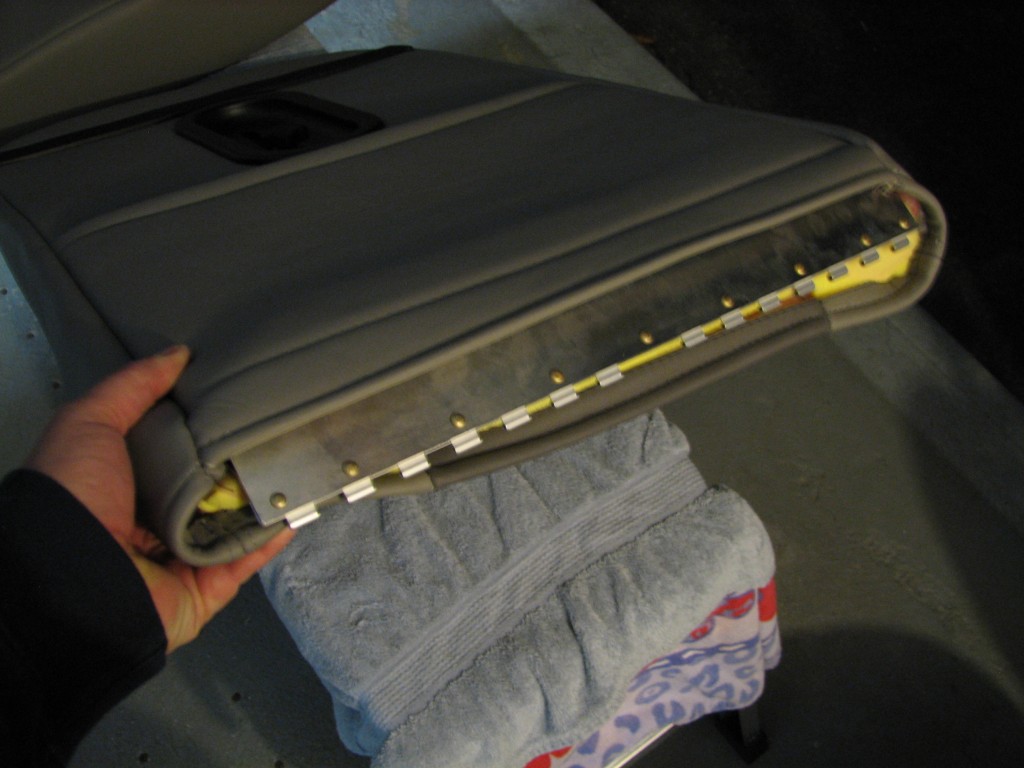
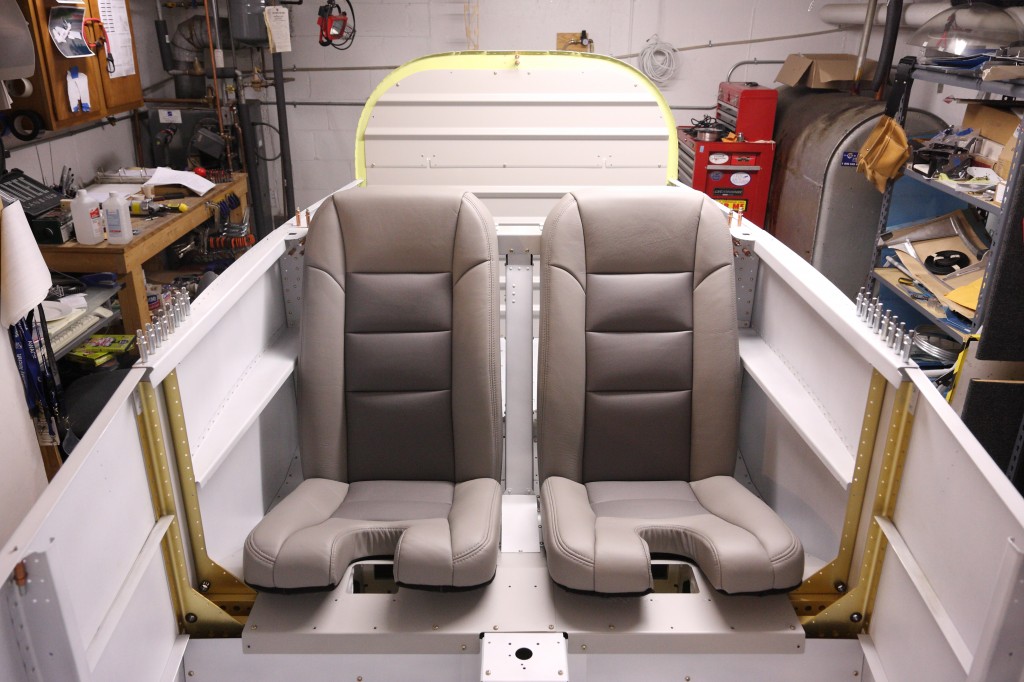 And here are the seats in place, and ready for sitting. We have a bottle of bubbly chilling in the ‘fridge to celebrate the first time we sit in the airplane!
And here are the seats in place, and ready for sitting. We have a bottle of bubbly chilling in the ‘fridge to celebrate the first time we sit in the airplane!